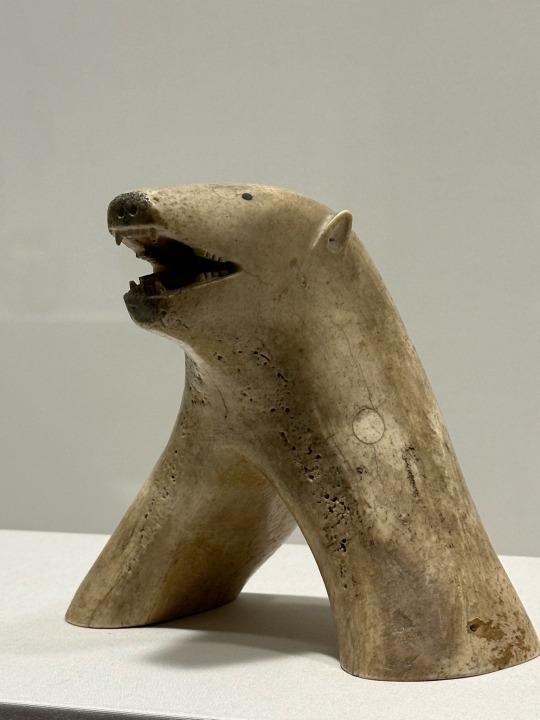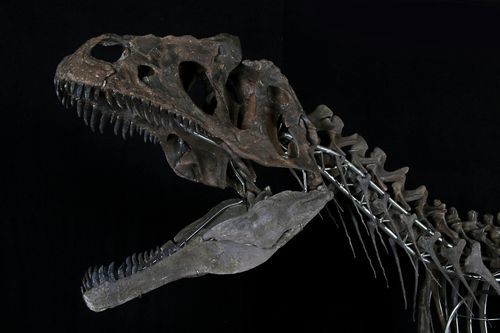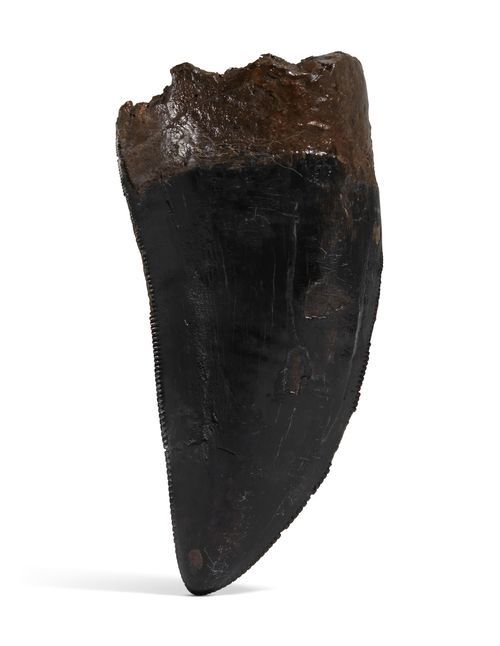#but also 90% of the stuff in there was ‘unidentified artist’ so
Explore tagged Tumblr posts
Text

Saw the most amazing little guy at the art museum today
#my posts#art museum#I should have taken a picture of the plaque#but also 90% of the stuff in there was ‘unidentified artist’ so#I have opinions about the guy the museum is named after and the fact that he couldn’t remember a single name#but this guy was ‘unidentified Inuit artist’ I think and he’s made of whale bone#I love him a whole lot
259 notes
·
View notes
Text
2021 Reading Log, pt. 26

126. The Peanuts Papers, Andrew Blauner, ed. This is an anthology put out by the Library of America in celebration of Charles Schulz and the comic strip Peanuts. Two of the essays are reprints—because if you can publish something by Umberto Eco and Jonathan Franzen, you do so��but most are original to this volume. Many of them are written by cartoonists about how Peanuts inspired them, but there are a variety of other takes, including a very strange mashup of Peanuts dialog with “Howl”, and a reflection on Lucy’s psychiatry booth by an actual psychiatrist. My love and affection for Peanuts is decidedly one of my most Boomer-y traits (I think because I read in reprints and they read in papers the good stuff, whereas Peanuts in the 80s and 90s had fallen pretty far from its peak). So I don’t know how many people here would appreciate this, but I had a good time with it.

127. The Icepick Surgeon by Sam Kean. This is a book on scientific crimes and unethical practices, arranged chronologically from the Age of Exploration into the modern day. Each chapter highlights an individual scientist and their misdoings, but expands into the context for similar issues in other times. Some of these stories are ones I’ve heard a dozen times—Burke and Hare (with Doctor Knox as the scientist), the Bone Wars, the Tuskegee syphilis experiment—whereas others were new to me, but all were well told. The most disturbing chapter was on John Money, who on the one hand coined the term “gender” to refer to humans, but on the other hand was a pedophilia apologist who abused his patients and was the primary impetus behind sex reassignment surgeries to intersex infants. I am fortunate enough to not know enough about TERF arguments to know if Money comes up in them, and Kean certainly doesn’t come to any “gender critical” conclusion, but I am concerned that this book may add fuel to some rather reprehensible fires.

128. The Ultimate Book of Imposters by Ian Graham. Ironically for a book about imposters, this has something of an identity crisis. You would think that a book of this nature would focus on con-artists and fake heirs, and there certainly are some of them in the book. But there are also historical trans people like Billy Tipton and James Barry, unidentified criminals like Dan Cooper, and a handful of spies and body doubles. Basically, if someone ever used a name other than their birth name, they have a chance of ending up in the book, which is a bizarre tack. Even more bizarre are the little boxed factoids in most of the articles, because they aren’t footnotes. In fact, it is impossible to tell when they should be read to complement the narrative, or if they’ll be fully redundant with the main flow of text, leaving the reader guessing each time they appear. It’s an incredibly frustrating experience to read.

129. Cruising the Fossil Freeway by Kirk Johnson and Ray Troll. This is partially travelogue and partly paleo-book, as it is the account of a lengthy roadtrip through the American West taken by the authors. Johnson is a paleobotanist and Troll a pop paleoartist. The focus is less on the biology side of paleontology than the geology, as Johnson tries to teach Troll how to identify deposits and scout for fossils. A lot of emphasis is given to the people they meet along the way, and the occasionally fraught relationships between fossil collectors, dealers and scientists. Troll’s art is found on almost every page, from little sketches to full color paintings. None of the dinosaurs are feathered (for a 2007 book), giving them a pleasingly retro vibe, but the marine invertebrates and fishes are spot on.

130. EC Archives Presents Tales From the Crypt, Vol. 3. This collects issues 29-34 of Tales from the Crypt, the height of the magazine’s popularity and right before the censors started attacking it. The stories range a little sillier in this volume, a fore-taste of how EC Comics would survive primarily as purveyors of Mad Magazine. Notable stories in this issue include “Lower Berth”, the Crypt-Keeper’s origin story, and the first official Ray Bradbury adaptation, “There Was an Old Woman”.
#reading log#tales from the crypt#horror comics#paleoart#paleontology#medical history#science history#peanuts
32 notes
·
View notes
Text
What’s behind the Roaring Market for Dinosaur Fossils

Unidentified dinosaur specimen from Wyoming. Courtesy of Aguttes, Paris.
On Friday, the prized paleontological specimen of Chicago’s Field Museum, a 40.5-foot-long Tyrannosaurus rex skeleton affectionately named Sue, will be reintroduced to the public in a new installation and with a few more of its bones in place. But 21 years ago, Sue was having a very different debut—at Sotheby’s auction house in New York.
The auction was enabled by a set of exceptional circumstances set in motion in August 1990 in South Dakota. Sue’s fossilized bones were excavated from a cliff in the town of Faith, brought to a commercial fossil dealer’s facility in Hill City, and, following a raid by government agents, stowed away in a furnace room at the South Dakota School of Mines and Technology in Rapid City. A judge had ruled that the commercial fossil dealer, Peter L. Larson, failed to secure the proper permissions to excavate Sue, whose remains had been found within the boundaries of a Native American reservation.
Following the the skeleton’s seizure and a series of legal challenges, ownership of Sue was awarded to the Sioux man whose land the fossil had been found on; with the government’s approval, he consigned the fossil to Sotheby’s. This all occurred in parallel with the release of Michael Crichton’s best-selling science fiction novel Jurassic Park (1990), its blockbuster cinematic adaptation by Steven Spielberg in 1993, and a sequel in May 1997—all featuring a swaggering T. rex as their reptilian lead. By the time Sue stomped onto the auction block, the global dinosaur craze had reached fever pitch.
Sue is widely considered the world’s largest and best preserved T. rex skeleton, and when the specimen went under the hammer in Sotheby’s single-lot sale on Saturday, October 4, 1997, it quickly eclipsed the presale estimate of at least $1 million. After nine minutes of bidding, Sue sold for a whopping $8.3 million—still the auction record for a dinosaur fossil. The Field Museum was only able to afford to bid at that level because it had struck deals with a set of public and private supporters, including Disney and McDonald’s, who got to make life-size casts of the fossil as part of their agreements with the museum (Disney put theirs on display at Disney World, while McDonald’s sent their two casts on a world tour). But the Sue sale also marked the beginning of a resurgence for the dinosaur fossil market.

Sue, the world's most complete tyrannosaurus rex. Photo by Martin Baumgaertner. © 2018 Field Museum.
“What happened after the Jurassic Park movies was that every wealthy person in the world apparently decided that they had to have a dinosaur in their living room,” said Hans Sues, the curator of vertebrate paleontology at the Smithsonian Institution’s National Museum of Natural History. But, he added, “fossil trading has always been a very widespread and fairly intense activity.”
In the 19th and early 20th centuries, fossils of prehistoric creatures were essential features of any serious collector’s Wunderkammer. “If you rewind the clock 100 years, dinosaur bones were almost at the top of the pile” for collectors, said James Hyslop, the head of Christie’s department of scientific instruments, globes, and natural history in London. “They were fetching hundreds of pounds, and when museums were acquiring them, they were costing the same as Old Masters.”
Though collectors’ appetites for art have outpaced their interest in fossils for much of the past century, dinosaur bones have recently clawed their way back.
“The Sue sale was the driving force,” said Eric Mickeler, a French fossil specialist. In June, he helped organize the sale of a nearly 30-foot-long skeleton of an unidentified theropod dinosaur from the late Jurassic period for French auction house Aguttes. Staged in a temporary pavilion erected beneath the Eiffel Tower, the sale was something of a throwback to the Sue auction, with a single spectacular lot up for grabs. The mysterious carnivore’s nearly complete skeleton surpassed its high estimate of €1.8 million ($2 million) to sell for €2 million ($2.3 million), an impressive result to be sure, though a far cry from Sue’s $8.3 million. Hyslop said this may simply be due in part to the T. rex’s popularity among dinosaurs.
“As with an artist, there is certainly a branding factor,” Hyslop said. “There’s an enormous difference in price and in interest between a T. rex tooth and an Allosaurus tooth, and it’s essentially because of the brand name of the T. rex.”
While the Aguttes sale seemed to confirm a persistent appetite for dinosaur fossils among collectors, another French auction house didn’t fare so well recently. On November 21st, Artcurial offered two large dinosaur skeletons—a 55-percent complete Allosaurus estimated at €600,000–800,000 ($682,000–909,000) and a 90-percent complete Camptosaurus estimated at €500,000–700,000 ($568,000–795,000)—in its natural history auction, its first test of the dinosaur fossil market. Both failed to sell.

Unidentified dinosaur specimen from Wyoming. Courtesy of Aguttes, Paris.
Still, with dinosaur fever showing no signs of relenting, and celebrity collectors like Leonardo DiCaprio expressing interest in acquiring fossils, the market seems destined to keep gaining momentum. And while Sotheby’s last offered dinosaur fossils in 2014, Christie’s now routinely offers them in its science and natural history sales; last month’s online sale “Sculpted by Nature” included T. rex teeth and a Thescelosaurus foot, while a sale in London in July included a Triceratops vertebra, a Triceratops humerus, and two Triceratops horns, the larger of which sold for £35,000 ($46,300).
“Among art collectors, there’s a sense that the dinosaur fossil market is undervalued, especially when you look at the relative value of art and fossils 100 years ago and today,” said Hyslop, noting the rapid increase in auction prices for art over the past century, while fossil prices have mostly lagged behind. “It’s a masterpiece market not so different from the market for art: A good Picasso makes significantly more than a bad Picasso, and the same is true of fossils.”
Mickeler painted a more specific portrait of the typical dinosaur fossil collector. “They are businessmen between 40 and 60 years old,” he said, “and quite often lovers of modern art.”
And, as with modern art, an expanding market means that provenance is increasingly important, as illustrated by the government seizure of Sue and Nicolas Cage’s misadventures with a stolen Mongolian Tyrannosaurus skull. Cage bought it at auction (DiCaprio was reportedly the underbidder), but then had to hand it over to the Department of Homeland Security; dinosaur fossils coming to market are subject to many national and international laws.
“Provenance is hugely important, and it’s alas something that wasn’t of huge concern 40 or 50 years ago,” said Hyslop.
The major auction houses now closely scrutinize fossils’ excavation documentation, export and import licenses, and more.

The foot of a dinosaur, Montana. Courtesy of © Christie's Images Limited 2018.

The tooth of a tyrannosaurus rex, South Dakota. Courtesy of © Christie's Images Limited 2018.
“We avoid [provenance problems] by systematically asking for the legal file of the dinosaur,” said Mickeler. “In this file must be the title deeds of the land, the excavation authorizations, the paid mineral right, the quarry map, the bones map, the export papers showing the customs taxes paid. You thereby verify that all its constituent bones come from the same excavation site, so it is not a ‘fake.’”
Airtight paperwork is all the more important because of how international the fossil market has become, and how inconsistent laws and their enforcement can be from one country to the next.
“A lot of the fossils that come on the market are from countries like China, Argentina, and Brazil that have very desirable types of fossils, including dinosaurs, and even though these countries have regulations on paper, somehow stuff always gets out,” Sues said. “You go to any major mineral show and there are dinosaur skeletons, or woolly mammoths, or woolly rhinoceroses—beautiful skeletons that get out of these countries. So obviously, the law and the enforcement of the law are quite different.”
The market’s appetite for dinosaur fossils can make enforcement difficult, though Sues noted that Germany, France, and increasingly the U.S. are very rigorous in tracking and policing specimens’ movements. The recent uptick in the dinosaur market has also made it harder for natural history museums and other scientific institutions to acquire important specimens, both at dig sites—where commercial fossil dealers can offer property owners much larger sums in order to dig up their land—and at auction.
“Natural history museums, unlike art museums, generally don’t have acquisitions funds,” said Sues. “So unless they find some person who’s willing to buy [a fossil] on behalf of the museum and then donate it to the museum—and there are very few people who’ll do that—you really are priced out of that market.”
So what are the odds of another fossil like Sue coming to market, and will museums be able to compete for it?
“It will depend entirely on the condition of it, Sue really is a spectacular specimen,” said Hyslop. But, he added, “there’s really good material that’s still available to collect.”
For Sues, it will depend on how creative natural history museums are willing to get. “Crowd-funding probably wouldn’t generate enough money for that purpose, but I think a partnership with a potent commercial sponsor is definitely something that one can look at,” he said. “Commercial collecting will always be here, and we just have to figure out ways that paleontologists and commercial collectors can collaborate to make sure that particularly exceptional specimens end up ultimately in a publicly accessible repository.”
from Artsy News
0 notes